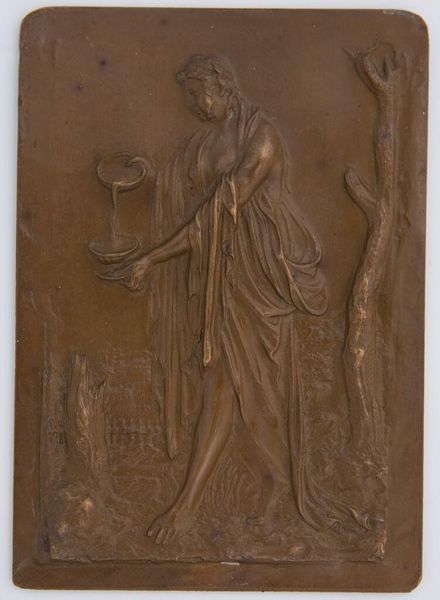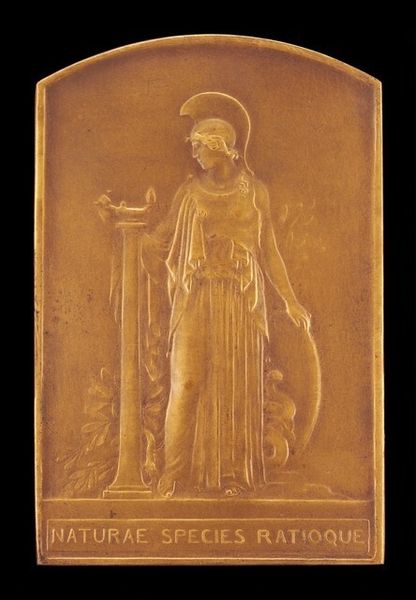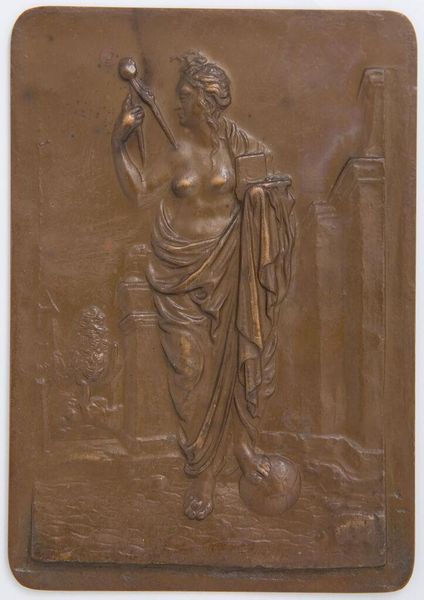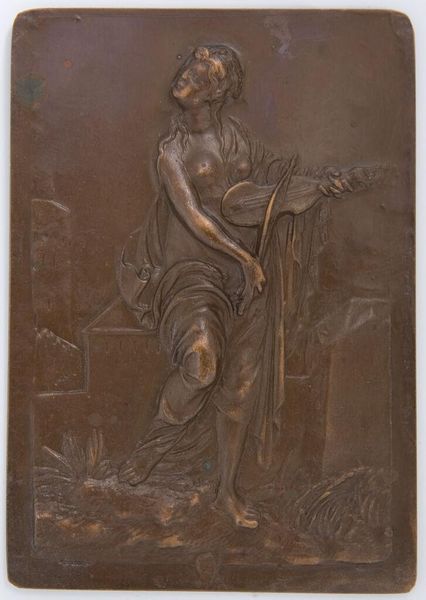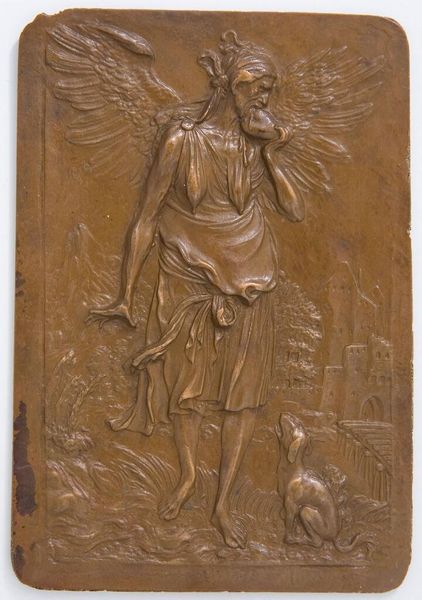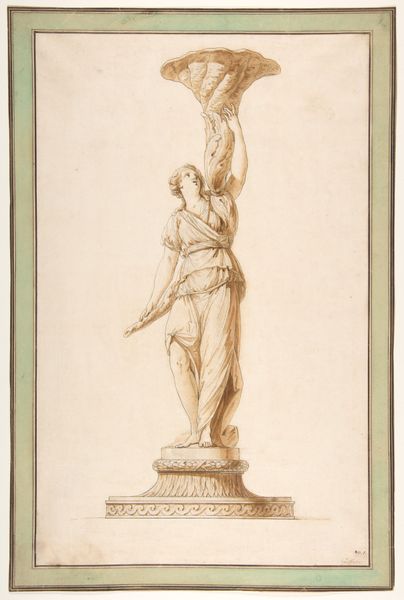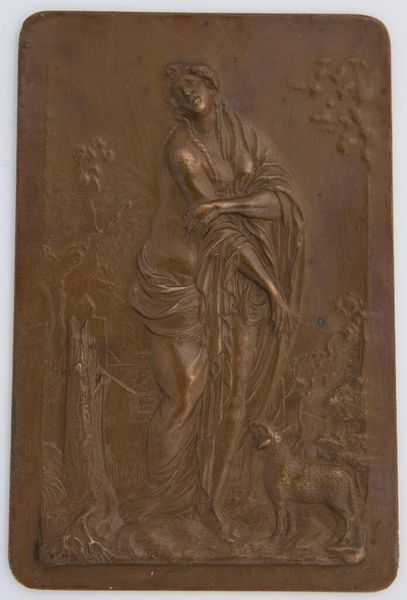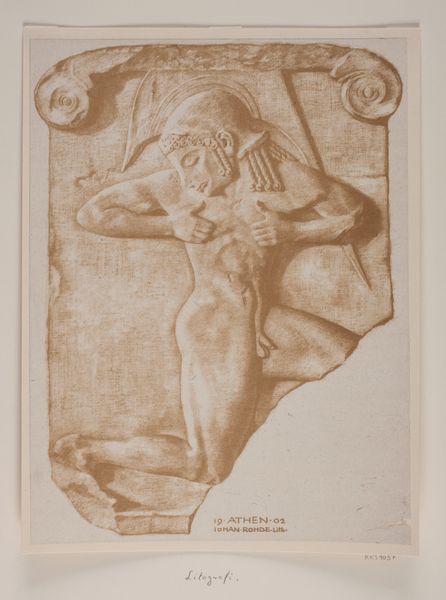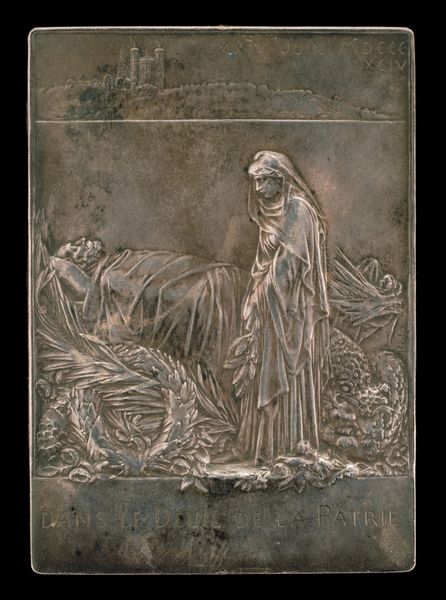
metal, relief, bronze, sculpture, pendant
#
portrait
#
neoclassicism
#
metal
#
stone
#
sculpture
#
relief
#
bronze
#
sculpting
#
sculpture
#
history-painting
#
academic-art
#
pendant
Dimensions: overall: 20.3 × 12.2 × 1.3 cm (8 × 4 13/16 × 1/2 in.)
Copyright: National Gallery of Art: CC0 1.0
Editor: Here we have a bronze relief plaque from 1925, crafted by Herbert Adams in honor of John Jacob Abel. The figure depicted, draped in classical garb, gives off such a poised and confident air. What visual elements stand out to you in this piece? Curator: Immediately, the formal elements command attention. The rectangular format provides a rigid structure, a container, for the more fluid sculptural elements within. Note how the artist employs high and low relief to create depth and visual interest, guiding the viewer's eye from the inscription up to the figure. The contrasting textures, smooth versus more articulated, contribute to the legibility of the piece. The text acts as both inscription and also structural element. How do you read that formal juxtaposition? Editor: The contrast of the smooth figure and rigid text does create a tension, but both contribute to the memorial effect. I mean, the classicism reinforces the enduring impact of Abel’s contributions. It's a study in contrasts and balance, really. Curator: Indeed. And observe how the drapery, though classically inspired, possesses a unique rhythm. It doesn't just clothe the figure; it animates the composition through a play of light and shadow. Its sinuous folds redirect our gaze back towards the plaque’s very specific intended purpose of bestowing enduring honor. Note too how those stylized garlands, held aloft, both frame and celebrate. How do they work to bring attention to the name inscribed between them? Editor: They act almost like celebratory drapery framing the inscription, giving the portrait more focus. Looking at it again, I notice more subtle gradations in the bronze, highlighting the details in the face and folds. I wouldn't have picked that up at first glance. Curator: Precisely. Adams clearly understands the power of formal arrangement in communicating not only tribute, but legacy. We witness that formal and historical cohesion bringing additional depth. Editor: This exercise has really clarified how much formal choices add layers of meaning to a piece that I only viewed for subject matter alone. Curator: Formal analysis truly enhances our understanding and enriches our experience with artworks such as this.
Comments
No comments
Be the first to comment and join the conversation on the ultimate creative platform.


